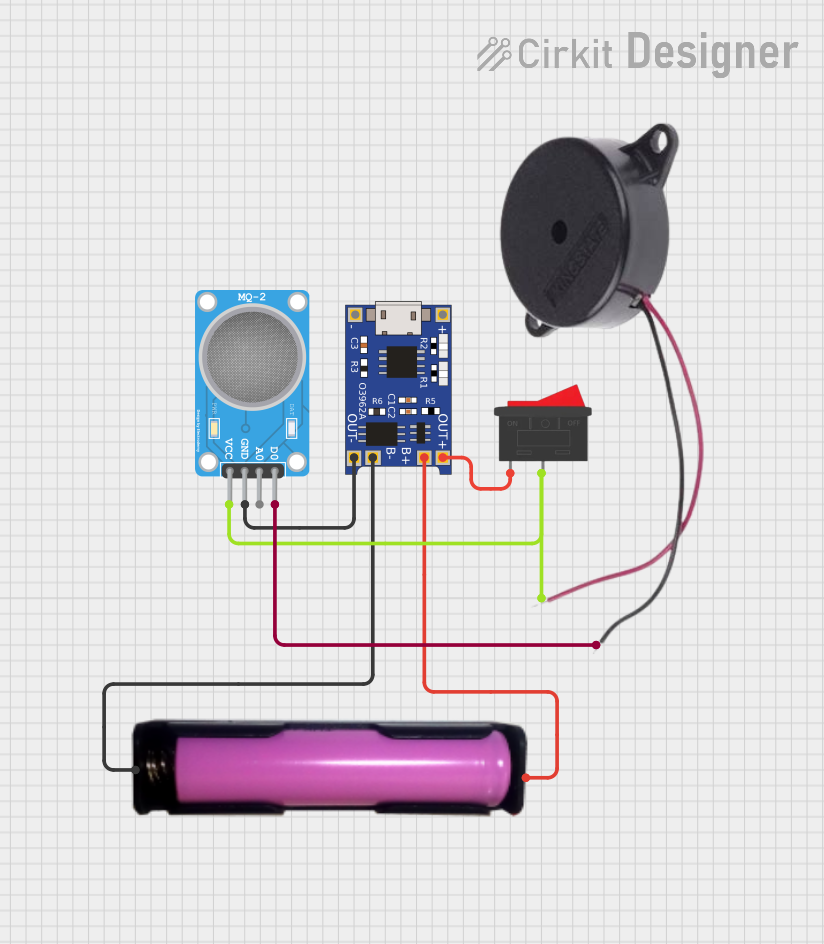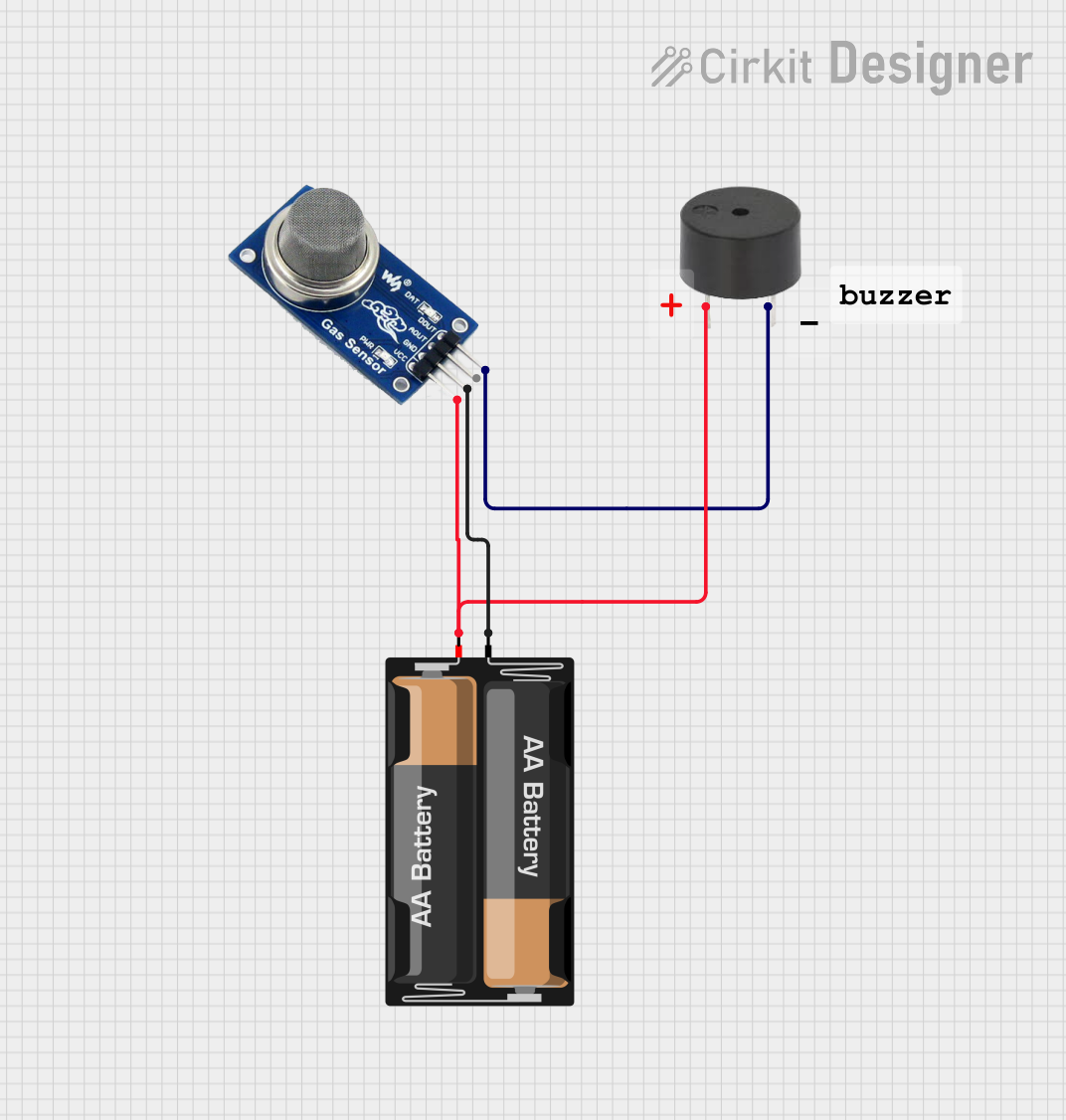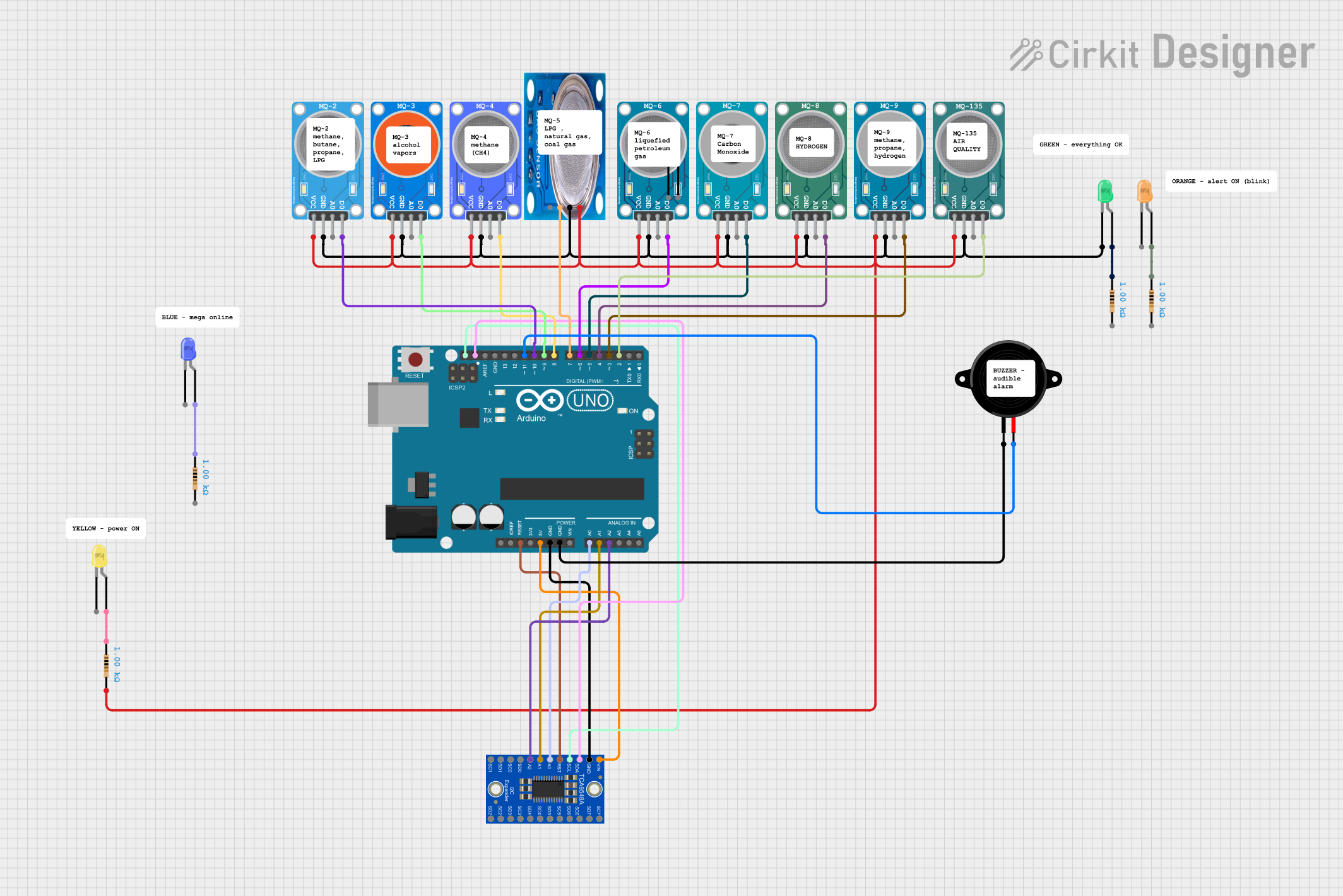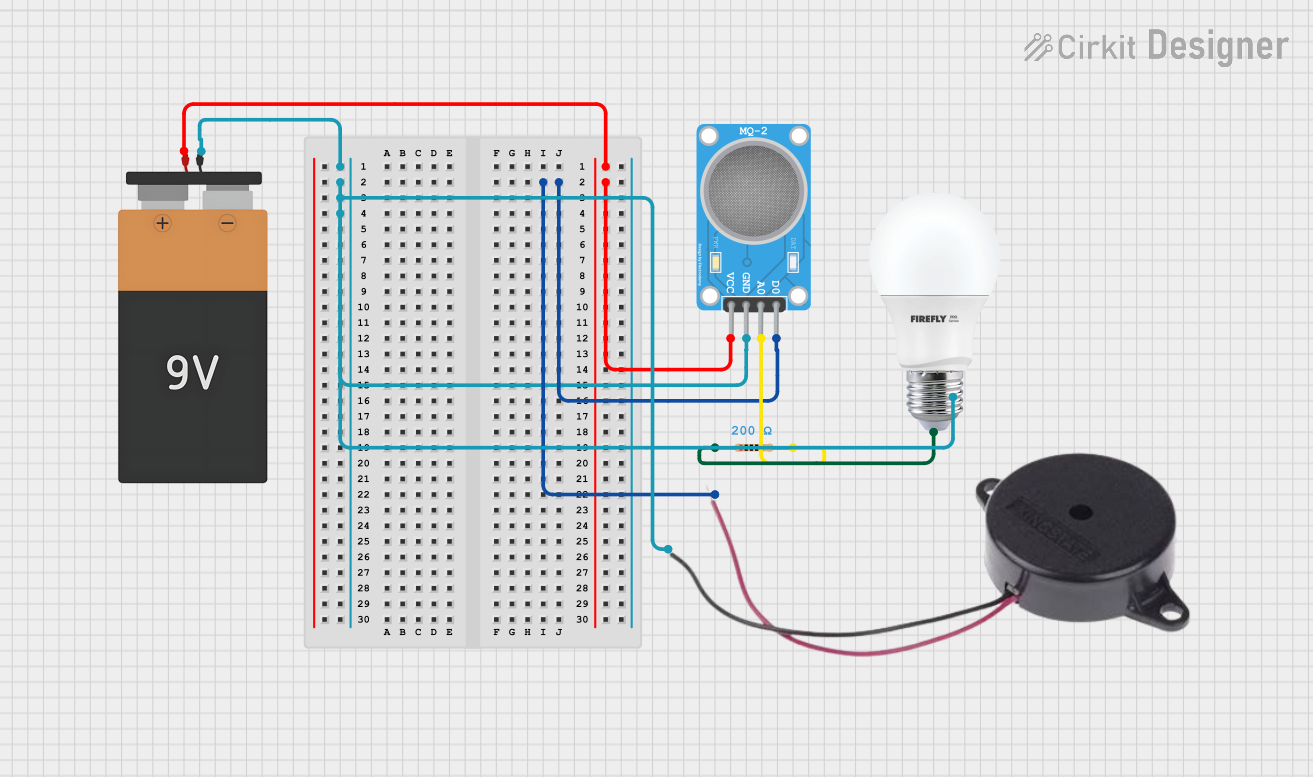
How to Use MQ-2 Gas Sensor: Examples, Pinouts, and Specs

 Design with MQ-2 Gas Sensor in Cirkit Designer
Design with MQ-2 Gas Sensor in Cirkit DesignerIntroduction
The MQ-2 Gas Sensor, manufactured by Winsen Electronics (Part ID: MQ-2), is a versatile and widely used sensor designed to detect various gases, including LPG, propane, methane, hydrogen, alcohol, and smoke. It operates on the principle of resistive change in the presence of gas, providing an analog output proportional to the gas concentration. This sensor is ideal for applications such as gas leak detection, air quality monitoring, and safety systems in residential, industrial, and automotive environments.
Explore Projects Built with MQ-2 Gas Sensor

 Open Project in Cirkit Designer
Open Project in Cirkit Designer
 Open Project in Cirkit Designer
Open Project in Cirkit Designer
 Open Project in Cirkit Designer
Open Project in Cirkit Designer
 Open Project in Cirkit Designer
Open Project in Cirkit DesignerExplore Projects Built with MQ-2 Gas Sensor

 Open Project in Cirkit Designer
Open Project in Cirkit Designer
 Open Project in Cirkit Designer
Open Project in Cirkit Designer
 Open Project in Cirkit Designer
Open Project in Cirkit Designer
 Open Project in Cirkit Designer
Open Project in Cirkit DesignerCommon Applications
- Gas leak detection systems (LPG, propane, methane)
- Smoke and fire detection
- Air quality monitoring
- Industrial safety systems
- Home automation and IoT projects
Technical Specifications
The MQ-2 Gas Sensor is designed for ease of use and integration into various systems. Below are its key technical details:
Key Specifications
| Parameter | Value |
|---|---|
| Operating Voltage | 5V DC |
| Load Resistance (RL) | Adjustable (typically 10 kΩ) |
| Heater Voltage (VH) | 5V ± 0.2V |
| Heater Power Consumption | ≤ 800 mW |
| Detection Range | 200 ppm to 10,000 ppm |
| Preheat Time | ≥ 24 hours for best accuracy |
| Output Signal | Analog (0-5V) |
| Sensitivity | Detects LPG, propane, methane, hydrogen, alcohol, and smoke |
Pin Configuration
The MQ-2 sensor typically comes with four pins or six pins, depending on the module version. Below is the pin configuration for the 4-pin version:
| Pin Number | Pin Name | Description |
|---|---|---|
| 1 | VCC | Power supply input (5V DC) |
| 2 | GND | Ground connection |
| 3 | AOUT | Analog output signal proportional to gas level |
| 4 | DOUT | Digital output (threshold-based, optional use) |
For the 6-pin version, the additional pins are typically duplicates of the above connections.
Usage Instructions
The MQ-2 Gas Sensor is straightforward to use in a circuit. Below are the steps and best practices for integrating it into your project:
Circuit Connection
- Power Supply: Connect the
VCCpin to a 5V DC power source and theGNDpin to ground. - Analog Output: Connect the
AOUTpin to an analog input pin of your microcontroller (e.g., Arduino). - Digital Output (Optional): If using the
DOUTpin, connect it to a digital input pin of your microcontroller. Adjust the onboard potentiometer to set the gas concentration threshold for the digital output.
Arduino UNO Example Code
Below is an example of how to use the MQ-2 Gas Sensor with an Arduino UNO to read analog values:
// MQ-2 Gas Sensor Example Code for Arduino UNO
// This code reads the analog output of the MQ-2 sensor and prints the value
// to the Serial Monitor. Ensure the sensor is preheated for accurate readings.
const int MQ2_AOUT_PIN = A0; // Connect AOUT pin of MQ-2 to Arduino analog pin A0
void setup() {
Serial.begin(9600); // Initialize serial communication at 9600 baud
Serial.println("MQ-2 Gas Sensor Test");
delay(2000); // Allow time for the sensor to stabilize
}
void loop() {
int sensorValue = analogRead(MQ2_AOUT_PIN); // Read analog value from MQ-2
float voltage = sensorValue * (5.0 / 1023.0); // Convert to voltage (0-5V)
// Print the sensor value and voltage to the Serial Monitor
Serial.print("Sensor Value: ");
Serial.print(sensorValue);
Serial.print(" | Voltage: ");
Serial.print(voltage);
Serial.println(" V");
delay(1000); // Wait 1 second before the next reading
}
Important Considerations
- Preheating: The sensor requires a preheating time of at least 24 hours for optimal accuracy. During this time, the sensor stabilizes its internal heater and sensing element.
- Ventilation: Ensure proper ventilation around the sensor to avoid false readings due to stagnant air.
- Calibration: For precise measurements, calibrate the sensor in a controlled environment with known gas concentrations.
- Power Supply: Use a stable 5V power source to avoid fluctuations in the sensor's output.
Troubleshooting and FAQs
Common Issues and Solutions
| Issue | Possible Cause | Solution |
|---|---|---|
| No output signal | Incorrect wiring or loose connections | Verify all connections and wiring. |
| Unstable or fluctuating readings | Insufficient preheating time | Allow the sensor to preheat for 24 hours. |
| Low sensitivity to gas | Dirty or obstructed sensor surface | Clean the sensor with a soft brush. |
| High power consumption | Faulty power supply or heater circuit | Check the power supply and heater voltage. |
FAQs
How long does the sensor last?
- The MQ-2 sensor has a typical lifespan of 2-3 years under normal operating conditions.
Can the sensor detect multiple gases simultaneously?
- Yes, the sensor can detect multiple gases, but it cannot differentiate between them. Additional calibration or sensors may be required for specific gas identification.
Why is the sensor output noisy?
- Noise in the output can result from unstable power supply or environmental factors. Use a capacitor across the power pins to reduce noise.
Is the sensor safe for continuous operation?
- Yes, the MQ-2 is designed for continuous operation, but ensure proper ventilation and avoid overheating.
By following the above guidelines and best practices, you can effectively integrate the MQ-2 Gas Sensor into your projects for reliable gas detection and monitoring.